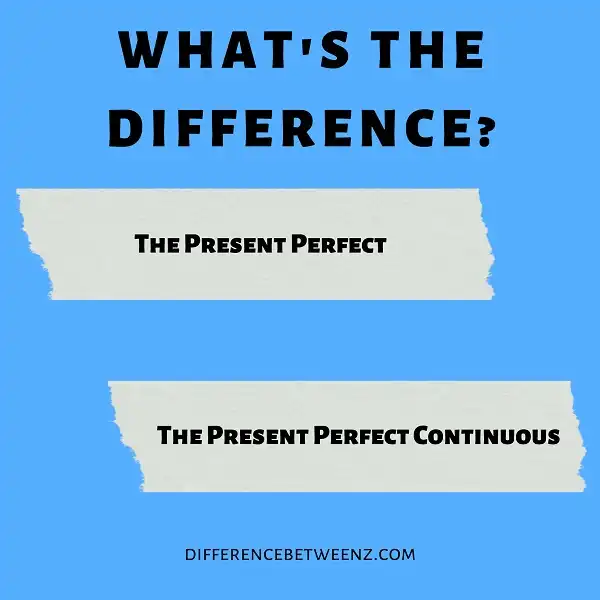The present perfect and the present perfect continuous are both forms of the present tense, but they have different functions. The present perfect is used to express a finished action or event that has consequences in the present, while the present perfect continuous is used to express an ongoing action or event. In this blog post, we’ll explore the differences between these two forms so that you can use them correctly in your own writing.
What is The Present Perfect?
The Present Perfect is a verb tense that is used to show that an action has been completed at some point in the past, but the time of the action is not important. The Present Perfect is often used with words and phrases such as “already,” “just,” and “yet.” It can also be used with expressions of time such as “today,” “this week,” and “so far.” The Present Perfect is formed using the present tense of the verb “have” plus the past participle of the main verb. For example, the Present Perfect form of the verb “walk” is “have walked.” The Present Perfect can be used with both regular and irregular verbs. The following are some examples of The Present Perfect:
– I have already finished my homework.
– We have just arrived at the hotel.
– They haven’t eaten yet.
– I have read two books this week.
– We have sold so many tickets already.
What is The Present Perfect Continuous?
- The Present Perfect Continuous is a verb tense which is used to describe an action that began in the past and is still continuing in the present. The present perfect continuous is formed using the present tense of the verb “to be” (I am, you are, he/she/it is) followed by the present participle of the main verb (the form of the verb which ends in “-ing”). For example: I have been studying English for two years. The Present Perfect Continuous can be used with both long and short verbs.
- The action does not need to be completed for the Present Perfect Continuous to be used; however, it must have started at some point in the past and still be happening at the present moment.
- The Present Perfect Continuous is used with actions which are habitual or repeated, as well as with temporary situations. It often expresses how long an action has been taking place, as well as showing the speaker’s attitude towards it. Generally, the Present Perfect Continuous is used more in spoken English than in written English.
Differences between The Present Perfect and The Present Perfect Continuous
- The Present Perfect and The Present Perfect Continuous are two tenses that are often used interchangeably. However, there are some important differences between these two tenses that you should be aware of. The Present Perfect is used to describe an action that occurred at a specific time in the past.
- The Present Perfect Continuous, on the other hand, is used to describe an action that began in the past and is still happening in the present. For example, if you say “I have been studying for my exams,” this means that you started studying in the past and you are still studying now.
- If you say “I have studied for my exams,” this means that you have already completed your studies. As you can see, The Present Perfect Continuous is used to describe an ongoing action, while The Present Perfect is used to describe a completed action. Keep this difference in mind when choosing which tense to use.
Conclusion
The present perfect and the present perfect continuous are both used to talk about completed and unfinished actions, but they have different uses. The present perfect is typically used for things that happened in the past and still have an effect on the present, while the present perfect continuous is used for ongoing or repeated actions. To decide which one to use, you need to consider the time frame and how long the action has been going on. Hopefully, this article has helped clear up any confusion between these two verb tenses.


